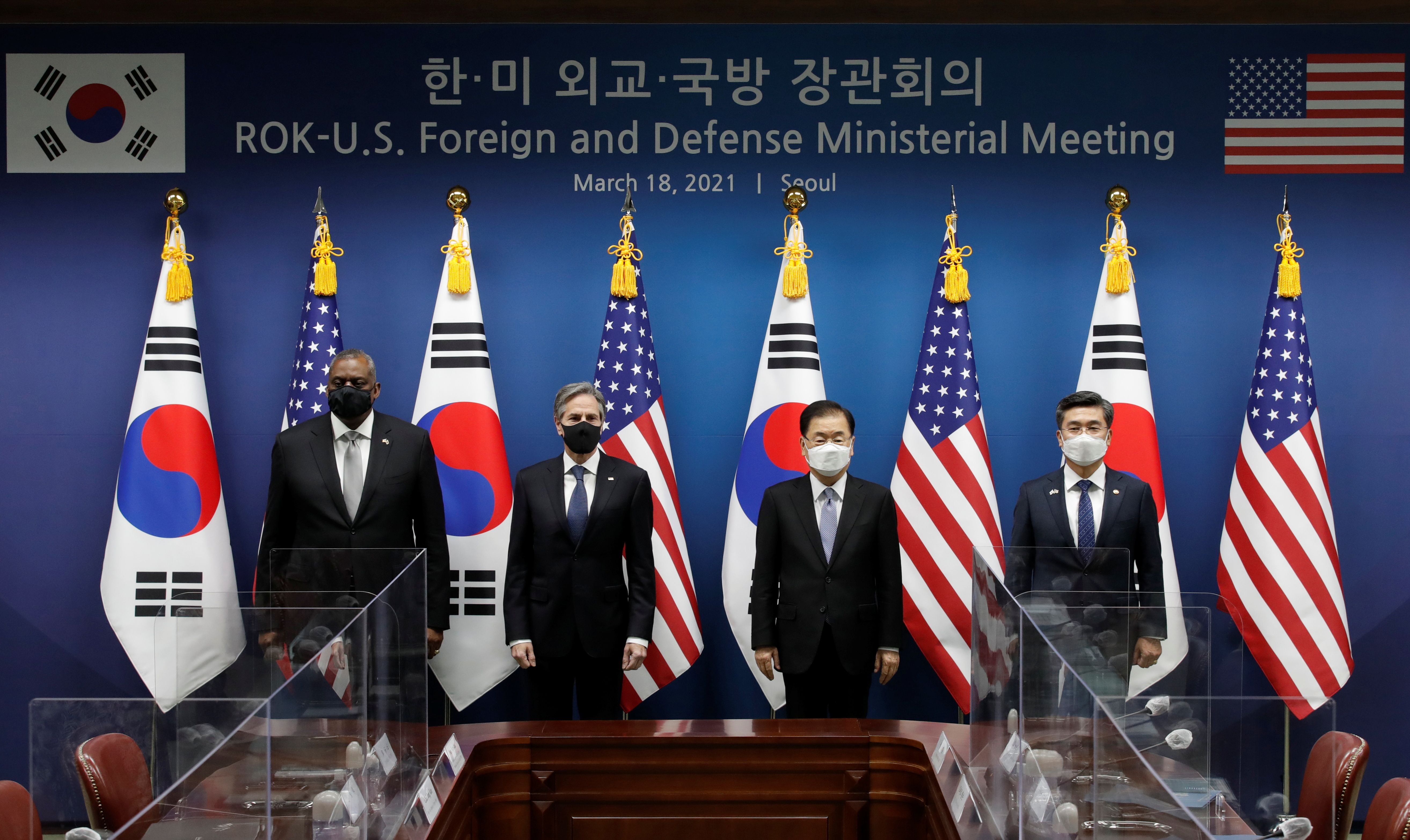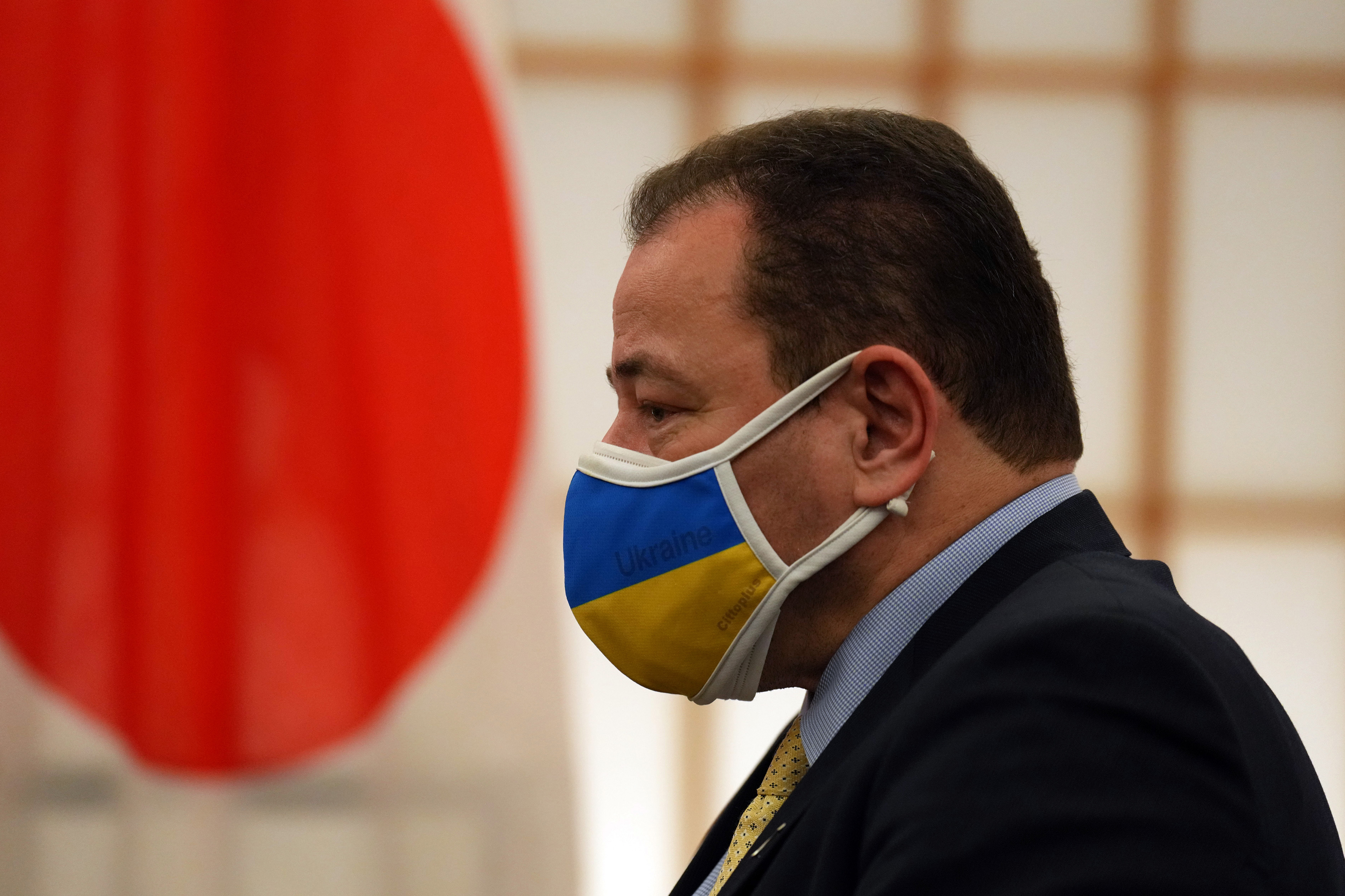Biden's Visits to South Korea and Japan
On 20-24 May, U.S. President Joe Biden visited South Korea and Japan, making his first trip to Asia since taking office. The visits demonstrated the importance of these allies in the implementation of U.S. strategy in the Indo-Pacific region and the importance of U.S. extended nuclear deterrence for the security of South Korea and Japan. In response to the global consequences of Russia’s aggression against Ukraine and China’s activity in the Indo-Pacific region, the U.S. is tightening its military, economic, and technological cooperation with its allies.
_sm.jpg) JONATHAN ERNST/ Reuters/ FORUM
JONATHAN ERNST/ Reuters/ FORUM
What were the circumstances of the visits?
From the beginning of Biden’s term in office, his administration emphasised the overriding importance of the Indo-Pacific region and allies in East Asia in U.S. foreign policy. This was evidenced by the fact that U.S. Secretary of State Antony Blinken and Secretary of Defence Lloyd Austin also paid their first foreign visits to Japan and South Korea. Even before Russia’s aggression against Ukraine, in February this year the Biden administration announced its strategy for the Indo-Pacific. In response to the war in Ukraine, the U.S. mobilised its Asian allies to put pressure on Russia, which, shortly before the invasion, deepened its cooperation with China, which the U.S. treats as a strategic rival. The will to continue U.S. involvement in the Indo-Pacific was confirmed by a special U.S.-ASEAN summit in Washington on 12-13 May. An additional impulse prompting Biden to visit the region was Yoon Suk-yeol’s taking office as South Korea’s new president.
What were the talks in South Korea about?
During the summit with Yoon, Biden reaffirmed the U.S. security guarantees to South Korea, including extended nuclear deterrence. To address the threat posed by North Korea, the allies pledged to expand the scope and scale of joint military drills, deploy U.S. strategic assets such as aircraft carriers “as necessary”, and intensified cybersecurity cooperation. They indicated a policy of both countries towards North Korea will be based on striving to denuclearise the Korean Peninsula, implementing sanctions, and condemning human rights violations, while maintaining readiness for dialogue and providing humanitarian support to the North. The presidents also announced deepening economic and technological cooperation, especially in the field of semiconductors, resilient supply chains and nuclear energy. Compared to the Biden and Moon Jae-in statement of May 2021, the latest findings place much greater emphasis on strengthening deterrence against North Korea, rather than a policy of engagement and dialogue.
What was agreed in Japan?
Biden’s meeting with Prime Minister Kishida Fumio reaffirmed the close allied ties between the U.S. and Japan, reinforced in April 2021 by launching a “global partnership for a new era” on security, shared values, economy, technology, and climate. Kishida announced a further increase of defence budget to develop Japan’s military capabilities, and Biden reiterated the U.S. security guarantees, including the nuclear umbrella, to Japan, as in the case of South Korea. The leaders emphasised the need to strengthen response to global challenges and develop cooperation on economy and technology by setting standards in world trade, strengthening resilient supply chains and developing new technologies, especially semiconductors. They also pointed to the problem of energy and food supplies disrupted by Russian aggression, and recognised the positive role of nuclear energy in combating climate change.
Was the issue of Russia’s aggression against Ukraine raised during the visits?
The Russian invasion of Ukraine was the subject of the talks in both countries. The presidents of South Korea and the U.S. condemned Russia’s aggression against Ukraine as a violation of international law and a threat to the rules-based international order. They announced the further implementation of the sanctions imposed on Russia, but South Korea so far has not committed to support Ukraine with weapons deliveries, which the U.S. asked for. Kishida and Biden also criticised Russia’s “irresponsible behaviour” as a permanent member of the UN Security Council, and the U.S. president supported the idea of Japan’s permanent membership in a “reformed” Council. The U.S. and Japan also emphasised the problem of military cooperation between Russia and China, which was revealed by joint flights by multiple Chinese and Russian warplanes nearby the South Korean and Japanese airspace on the last day of Biden’s visit. On the other hand, the emphasis on the guarantees of U.S. extended nuclear deterrence for Asian allies can be read as a reaction to Russia’s nuclear threats during the invasion of Ukraine.
What do the visits mean for U.S. policy towards China and U.S. strategy in the region?
The visits indicate the deepening of the coordination between the U.S. and its allies in addressing the challenges and threats in the region, primarily related to the policy of North Korea and China. In the case of the latter, this also applies to economic issues, as South Korea and Japan joined the U.S.-led Indo-Pacific Economic Framework (IPEF). Japan appears to be the most important ally of the U.S. in the region, sharing American perception of threats. This is evidenced by Japan’s involvement in the Quad, as well as its position on Taiwan, in defence of which the U.S., in Biden’s suggestions, would be ready to use military force. Japan emphasises the need to maintain peace and stability in the Taiwan Strait, while pointing to China as a source of destabilisation in the region. In turn, South Korea, after years of trying to balance between the U.S. and China, is under conservative rule adjusting its policy to the U.S. strategy in the Indo-Pacific. However, fearing Chinese economic pressure, South Korea wants to avoid confrontation with China. Therefore, South Korea does not indicate China as a country destabilising the situation in the region and is counting on deepening economic and technological cooperation with the U.S. to reduce the interdependence with China.





